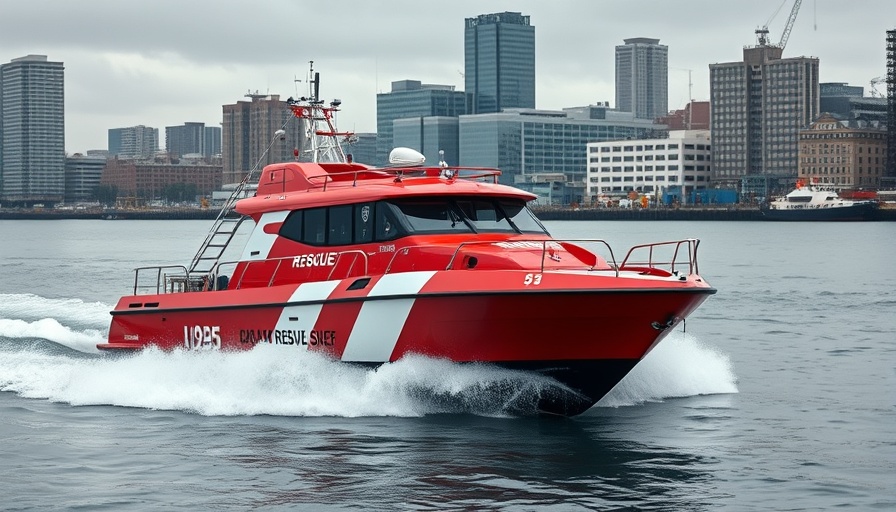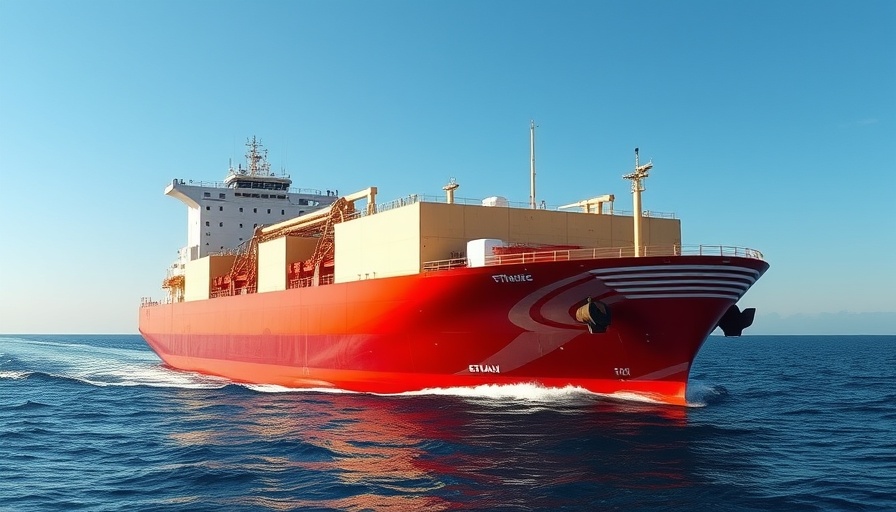
Introducing the Cutting-Edge MFV-R Blue Dolphin
In a remarkable stride toward enhancing maritime rescue capabilities, BMT and Penguin Shipyard International have unveiled the MFV-R Blue Dolphin, a pioneering marine fire and rescue vessel. Designed specifically for the Singapore Civil Defence Force (SCDF), this next-gen vessel demonstrates significant advancements in operational efficiency and emergency response procedures at sea. The Blue Dolphin, alongside its twin vessel, marks a considerable upgrade for maritime firefighting and rescue functions in one of the most bustling maritime areas worldwide.
Why This Vessel Matters: Mission-Ready Features
At 38 meters long, the Blue Dolphin is not just about size but remarkable design that optimizes performance. The aluminum monohull ensures superior maneuverability and stability, critical in high-stakes situations. The vessel's ability to reach speeds exceeding 30 knots allows it to respond promptly to emergencies, a necessity in a region where every second counts.
The enhanced firefighting system onboard the Blue Dolphin is particularly noteworthy. With three powerful fire monitors and pumps delivering an impressive flow rate of 3,600 cubic meters per hour, it is equipped to handle significant incidents effectively. The addition of 12,000 liters of foam capacity and a self-protection water curtain afford robust firefighting capabilities that far exceed standard requirements.
A Multifaceted Approach to Safety and Response
The Blue Dolphin is equipped with a high-speed rubber hull inflatable boat (RHIB) designed for rapid deployment during rescue missions. This feature reflects an understanding of the complexities involved in marine emergencies, especially in shallow waters where traditional vessels may struggle.
Moreover, in anticipation of potential hazards, the onboard Chemical, Biological, and Radiological (CBR) protection systems show foresight into evolving threats in maritime operations. Sensors capable of detecting toxic agents up to 5 kilometers away enhance the vessel's capabilities in hazardous situations, allowing for real-time mapping of high-risk areas.
Sustainability Meets Performance
In alignment with global sustainability efforts, the vessel incorporates solar panel systems, enabling it to operate on renewable energy, alongside biofuel-compatible engines. This commitment to sustainability not only helps reduce the environmental footprint but aligns with Singapore’s broader goals for environmental consciousness in public service operations.
A Strong Validation for BMT and Penguin
The successful delivery of the Blue Dolphin signifies a robust endorsement of BMT's design prowess. The commissioning ceremony, presided over by Minister Edwin Tong, celebrated the vessel's sophisticated features and its critical role in the SCDF's mission. As Martin Bissuel, head of sales at BMT, noted, this project is a testament to the confidence placed in their design capabilities following previous successes.
Looking Ahead: The Future of Maritime Rescue
The introduction of the MFV-R Blue Dolphin prepares the SCDF for future maritime challenges. With constant developments in technology, it is imperative that emergency services adapt swiftly and efficiently. The integration of advanced systems, including autonomous features like virtual anchoring, reflects an understanding of the demanding landscape of emergency maritime operations.
In the context of rising maritime traffic and associated risks, the evolution of such vessels is crucial. They are not merely tools; they represent a comprehensive strategy to improve safety, save lives, and protect vital maritime resources.
The delivery of the Blue Dolphin positions Singapore as a leader in innovative rescue solutions, reinforcing the importance of timely advancements in firefighting and rescue capacity in congested waters.
 Add Row
Add Row  Add
Add 




Write A Comment